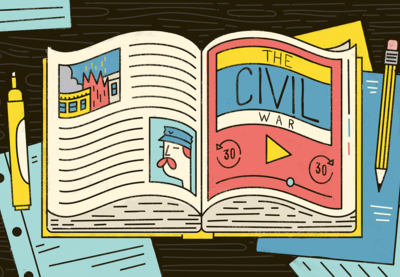Introduction
The feature story “The Subscribed Classroom: Using Podcasts to Teach About Social Justice” shows how teachers can encourage more critical analysis and dialogue through the use of podcasts. This digital platform provides flexibility and new perspectives to help engage students in complex topics. Here are some reminders and resources for educators looking to utilize podcasts in the classroom.
Procedure
Educators who are interested in using podcasts as teaching tools must be mindful of not only the content but also the unique circumstances of their students and their school. The following recommendations can help educators create lessons around podcasts.
Understand school media policies and access
Before listening to podcasts in the classroom with your students, review your school policies regarding internet and media usage. It is possible that your school does not allow certain websites or that particular podcasting platforms are blocked on your school network. Additionally, if you are inviting or requiring students to listen to podcasts outside of classroom hours, ensure that all your students have access to the internet or media-playing devices. Provide equitable opportunities for students to participate in podcast listening.
Review podcast for sound quality and content
Listen to the podcast series or episode prior to sharing with students, and think about the elements that will make the podcast an effective learning tool. Consider the following questions:
- Is the audio quality clear and free from distracting sounds?
- Does the podcast use creative, engaging and dynamic audio to engage the listener?
- Does the host speak for long periods of time without pause or other breaks?
- Does the podcast narrative include diverse voices and perspectives?
- Is there a transcript for students who may have hearing impairments or for those who might otherwise require it?
- Does the content need extra support or frontloading regarding difficult, challenging or triggering topics?
Engage students in active listening
While listening to podcasts in the classroom, invite and encourage student discussion of the content. Online platforms such as FlipGrid allow for fuller student discussion and teacher feedback. Continue the conversation using popular hashtags, and invite students to connect what they learned to larger themes.
Encourage students to create their own podcast
After students listen to a podcast, invite them to create their own series. In addition to hosting an annual student podcast competition, NPR has a thorough how-to guide for students interested in creating their own podcasts. Teachers can also utilize student-created podcasts as a tool for documentation and assessment of ongoing student learning.
Podcasts to Listen to in the Classroom
There are many options for podcasts to listen to and share with students. The following suggestions are popular options with accessible entry points for students.
Code Switch
Focusing on the “overlapping themes of race, ethnicity and culture [and] how they play out in our lives and communities,” Code Switch is able to break down critical issues using personal storytelling. Some episodes will contain graphic descriptions of historic injustice that educators may not want to play in the classroom without proper scaffolding; other episodes may contain language or political subject matter that requires having a good handle on classroom conversation agreements. A good episode to begin with is “The U.S. Census and Our Sense of Us,” which offers a look at the history and future of the U.S. Census and how it has shaped the way people identify, organize and demand representation.
Criminal
While not all Criminal episodes are appropriate for classroom listening, many episodes confront issues of mass incarceration, our criminal injustice system and other issues related to crime—and its social and historical conceptualizations. An episode to begin with is "Just Mercy," an interview with Equal Justice Initiative founder Bryan Stevenson.
StoryCorps
The power of StoryCorps is in its simple and honest formula. It honors the real-life stories of everyday people by letting those people tell their stories directly rather than through the lens of an interviewer or host. An episode to begin with is the story of Gabe López, a transgender child navigating family, school and belonging. (If you’re looking for an easy way to start incorporating audio texts into your classroom, you can also find excerpts of StoryCorps audio stories, along with transcripts and vocabulary, in our Student Text Library).
Notes on the State
This six-part podcast series from the Carter G. Woodson Institute for African-American and African Studies takes a critical look at Thomas Jefferson’s Notes on the State of Virginia and “seeks to reconcile our foundational myths and ideals with the realities of their limits and failures.” The first episode explores the contradictions between Jefferson’s racist theories about black people and his ideals of liberty. Usefully, the podcast’s website also provides a list of resources—including Jefferson’s writing—that can be used to provide additional context.
BackStory
BackStory is a helpful podcast for connecting issues of today with their historical precedents. Hosted by historians but conversational in tone and approach, this podcast may help spark a well-informed classroom conversation about current events. An episode to begin with is “Teen Activists,” which connects the recent Youth Strike 4 Climate with a history of youth political action and protest that your students will find fascinating.
